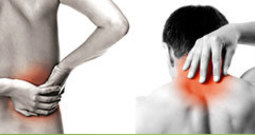
The ageing process can be pretty unforgiving. We lose muscle tone and skin elasticity whilst often gaining weight; meanwhile, our bodies become more fragile and drop in stamina and cardiovascular strength. To put a figure on it, your muscle mass can decrease by 30-40% by the time you’re 70. Such can be the cost of living to a ripe old age.
However, this doesn’t necessarily have to be the case. With regular physical activity, a balanced diet and a positive mental outlook, you can help to delay, reduce and in some cases even reverse a variety of conditions that are attributed to old age. Below are some ways to combat common ailments caused by advancing years.
We’ve got your back
The old mantra to lift with your knees is there for a reason. If you lift something incorrectly (whether it’s weights at the gym or heavy shopping bags at the supermarket), any strain directed to your spine and back muscles can cause trouble.
This is why we recommend strength training, as it can significantly decrease back problems and alleviate lower back pain. It doesn’t have to be an extreme workout: simple exercises with weights and resistance bands, and body weight exercises like push-ups and squats can help to lubricate the joints and strengthen muscles.
The back is the core of the body, so keep it strong by following a safe exercise routine that suits your abilities. Stretching is also important, as this helps to increase flexibility and tackles aches, pains and stiffness.
Don’t be bone idle
It may make you wince, but as you enter your 40s and 50s more of your bone is broken down by your body than replaced. Bone loss can get to the point where the bones in your hips, back and wrists break easily, which is known as osteoporosis.
Again, this doesn’t have to be the case. A suitable exercise routine given to you by your physiotherapist will work to your physical capability, helping to increase strength and elasticity and even reduce the risk of fractures. This is achieved through increased bone density and muscle mass whilst preserving calcium in the bones.
Many forms of physical activity can help, including walking and taking the stairs, so it’s actually quite easy to incorporate more exercise into daily life.
A change of heart
Aerobic activity can often decrease with age. In fact, while a healthy 25-year-old heart can pump 2.5 quarts of oxygen a minute, a 65-year-old heart can’t pump more than 1.5 quarts, and an 80-year-old heart can only reach about a quart, even if it’s completely healthy. This can cause fatigue and breathlessness even during normal daily activities.
Endurance exercise can make a huge difference, plus it’s enjoyable. Taking long walks around your favourite places will help strengthen your cardiovascular function whilst lifting the mood and freeing the mind. Aquatherapy is also highly effective, keeping your heart muscle strong and your arteries flexible, boosting your heart's ability to deliver oxygen-rich blood throughout your body. As always, your physiotherapist can suggest exercises to suit you personally.
Just what the physiotherapist ordered
Muscles that are used infrequently become weak and prone to injury. With a specially designed exercise plan, you can establish better balance and agility, increase your flexibility and bone density, and create stronger muscles, all of which will help you to move more easily, and prevent falls and injuries. If you already have an injury, suitable exercises can speed up the healing process.
How Physio Med can help
Our skilled and helpful physiotherapists are here to create a fitness plan to be used by you and you alone. Regardless of your age, contact Physio Med for professional advice and customised tips on how to stay fit, healthy and happy year after year.
Tel: 0113 229 1300
Web: Contact Us Form



